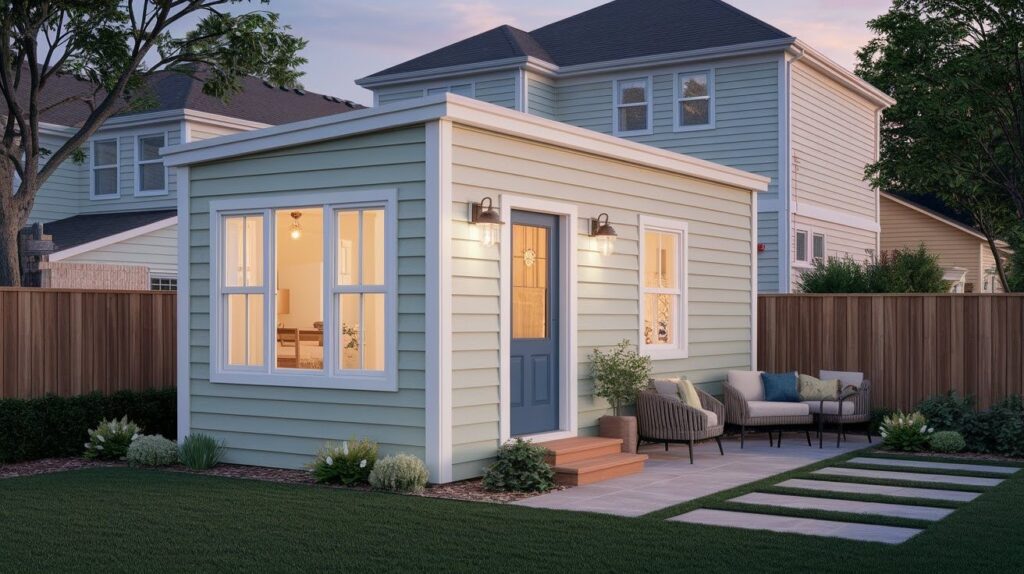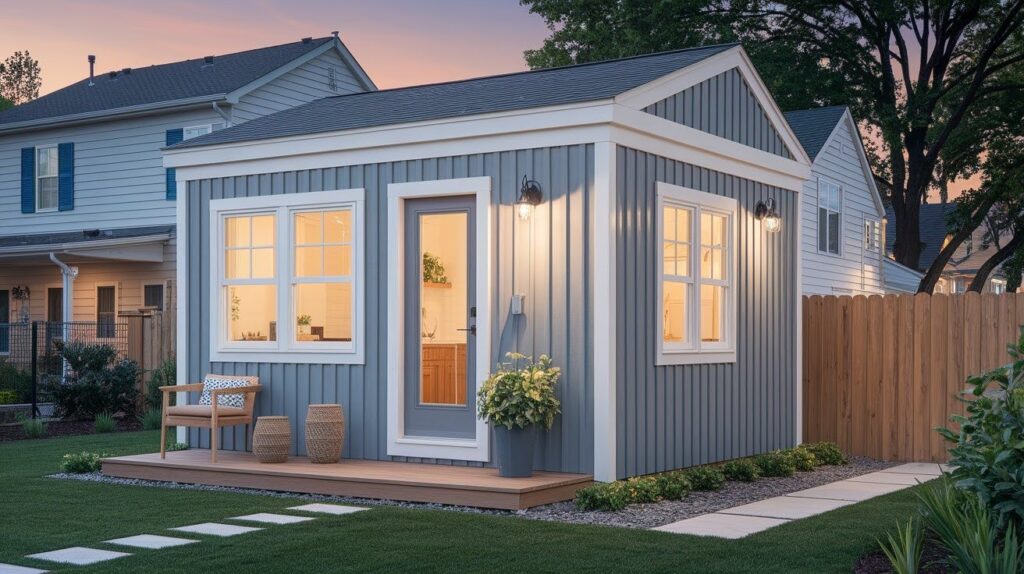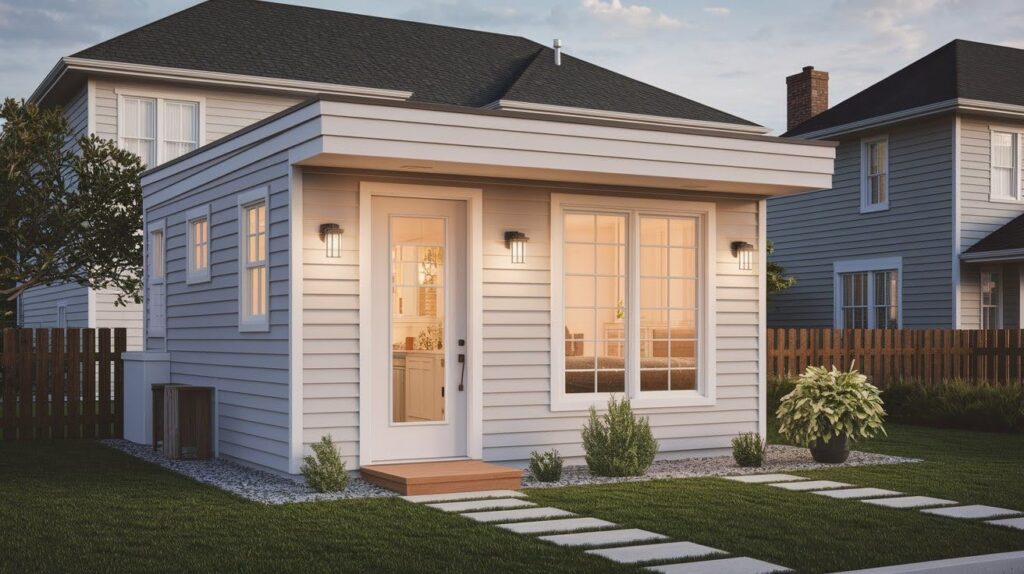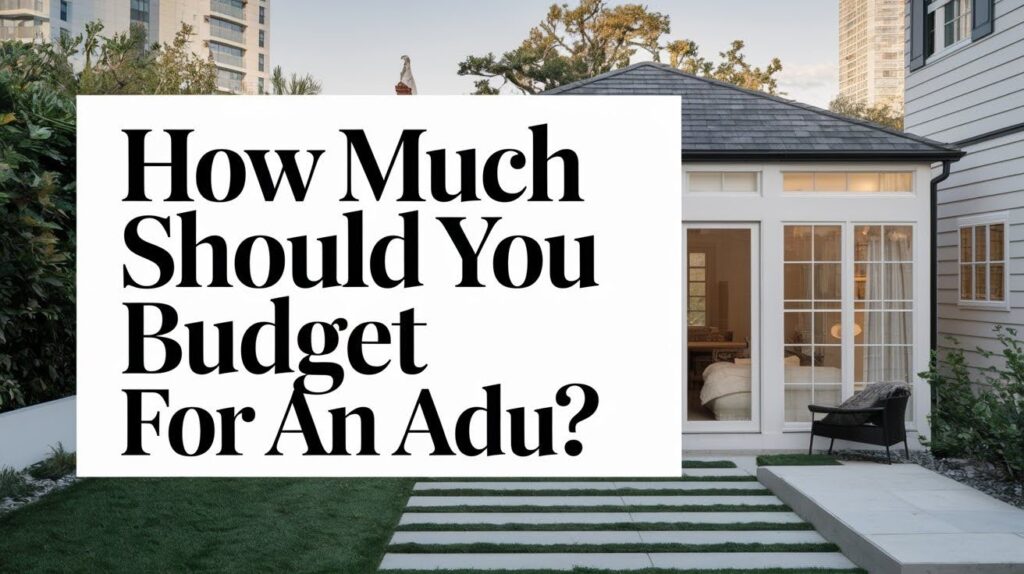Building an Accessory Dwelling Unit (ADU) represents one of the most strategic investments homeowners can make in today’s housing market.
These secondary living spaces offer multiple benefits, from generating rental income to housing family members while significantly increasing property values.
However, many homeowners struggle with understanding the true costs involved in ADU construction, often underestimating expenses that extend far beyond basic building materials and labor.
Proper budget planning is essential for ADU success, as costs can range dramatically from $30,000 for simple conversions to over $350,000 for premium detached units.
This comprehensive guide breaks down all associated expenses, from construction and permits to hidden fees and ongoing maintenance, helping you make informed decisions about your ADU investment and avoid costly surprises during the building process.
What Is an ADU and Why Build One?

An Accessory Dwelling Unit (ADU) is a secondary housing structure on the same property as a primary residence, functioning as an independent living space with its own kitchen, bathroom, and sleeping area.
These units are also known as granny flats, in-law suites, or backyard cottages.
Homeowners build ADUs for three primary reasons. Rental income serves as a major motivator, as these units can generate substantial monthly revenue to offset mortgage payments or provide additional household income.
Housing family members offers another benefit, providing perfect solutions for aging parents or adult children who need affordable, independent living while staying close to family support.
Property value increase represents the long-term financial advantage, as well-designed ADUs typically add substantial value that often exceeds initial construction costs.
This makes properties more attractive to future buyers in competitive real estate markets where additional living space and income potential are highly valued.
Average Cost to Build an ADU in 2025
Building an ADU in 2025 typically costs between $30,000 to $350,000 or more, depending on project scope and complexity.
- The lower end includes simple garage conversions or basic prefabricated units with minimal customization and standard amenities.
- Mid-range projects fall between $100,000 to $200,000 for new construction with standard finishes and moderate square footage.
- High-end ADU projects can exceed $350,000 when they include luxury finishes, larger square footage, or challenging site conditions.
- Premium units often feature custom architectural details and high-quality materials that rival primary residences in comfort and appearance.
- Size and layout choices directly affect material quantities and construction complexity, impacting overall project costs significantly.
- Location and permitting requirements vary dramatically between municipalities, with some areas requiring extensive fees and compliance measures.
- Materials and labor represent the largest cost components, with prices fluctuating based on local market conditions and contractor availability.
Cost Breakdown by Type of ADU

ADU costs vary significantly by type, from budget-friendly tiny homes at $30,000 to premium detached cottages exceeding $350,000.
1. Tiny Home ADU (on wheels or foundation)
Tiny home ADUs represent the most budget-friendly option, with estimated costs ranging from $30,000 to $100,000 depending on size and finish quality.
The lower cost stems from their compact design that requires fewer materials and reduced labor time compared to traditional construction methods.
These units are ideal for rental income generation or situations where travel flexibility is desired, as wheeled versions can be relocated if needed.
2. Garage Conversion ADU
Garage conversion projects typically cost between $50,000 to $100,000, making them attractive for homeowners seeking quick returns on investment.
These conversions leverage existing structural elements like foundations, walls, and roofing, significantly reducing construction requirements and associated costs.
The fastest return on investment makes garage conversions popular among property owners looking to generate rental income without major financial commitments.
3. Home Addition ADU (Pop-Out or Above Home)
Home addition ADUs range from $80,000 to $200,000 and blend seamlessly with the main residence’s architectural style and design elements.
These additions may add substantial equity to the property while creating additional usable space that enhances overall home functionality.
The integrated design often results in higher property values compared to standalone structures.
4. Attached ADU
Attached ADUs cost between $100,000 to $250,000 and share at least one wall with the main house, reducing construction complexity and material requirements.
This shared wall configuration makes them more affordable than completely detached builds while still providing independent living space for tenants or family members.
5. Above-Garage ADU
Above-garage ADUs require investments of $150,000 to $300,000 due to structural reinforcement needs and complex construction requirements.
While these units utilize existing garage footprints efficiently, they can be expensive because of foundation strengthening, stair construction, and utility installation challenges that come with building above existing structures.
6. Detached ADU (Backyard Cottage)
Detached ADUs represent the premium option, costing $150,000 to $350,000 or more for complete independence from the main home.
These standalone structures offer the highest rental potential due to maximum privacy and separation, making them attractive to tenants willing to pay premium rents for independent living arrangements.
Hidden Costs You Need to Consider

Permit and Impact Fees
- Permit and impact fees typically range from $5,000 to $20,000 but vary dramatically by city or county.
- Impact fees cover infrastructure improvements while permit fees fund review and inspection processes required for legal construction.
Architectural and Engineering Plans
- Professional design services typically cost between $3,000 to $15,000 depending on project complexity and local requirements.
- These plans ensure compliance with building codes and provide contractors with detailed construction guidance for safe building.
Utility Upgrades
- Electrical, water, and sewer connections often require upgrades costing $2,000 to $10,000 or more for additional capacity.
- Service panel upgrades, new water lines, or sewer improvements are often necessary for safe, legal operation of secondary units.
Site Work and Landscaping
- Site preparation including driveways, retaining walls, and landscaping typically ranges from $2,000 to $15,000 depending on conditions.
- Challenging terrain or limited site access can increase expenses significantly beyond initial project estimates.
Furnishings and Appliances
- Kitchen appliances, bathroom fixtures, and storage solutions represent additional costs often overlooked in initial budget planning.
- Furnishing a complete ADU can add thousands to tens of thousands depending on quality choices and tenant requirements.
Insurance and Ongoing Maintenance
- Adding an ADU may impact homeowners insurance premiums due to increased property value and liability exposure from tenants.
- Regular maintenance and eventual system replacements create ongoing costs that affect long-term investment profitability and returns.
How Long Until an ADU Pays for Itself?

The payback period for ADU investments typically ranges from 3 to 25 years, depending on construction costs, rental income, and local market conditions.
Tiny home ADUs generally generate $800 to $1,500 monthly, while premium detached cottages can earn $2,000 to $4,000 or more in high-demand areas.
Budget-friendly conversions in strong rental markets may pay for themselves within 3 to 7 years, while expensive custom builds could take 15 to 25 years to recoup initial investments.
Factors beyond rental income affect payback calculations, including property tax increases, insurance adjustments, maintenance expenses, and vacancy periods.
Many homeowners also benefit from immediate property value increases that reduce effective payback periods when considering total equity gains rather than just rental income recovery.
Budgeting Tips for Building an ADU
- Set a Realistic Budget Range: Establish your maximum spending limit before consulting with professionals to avoid scope creep and costly changes during planning. Having a firm budget prevents emotional decisions and helps guide all design and material choices throughout the project.
- Account for Hidden Fees Early: Include permits, architectural plans, utility upgrades, and insurance adjustments in initial budget calculations rather than treating them as afterthoughts. These costs can add 20-30% to total project expenses, so factoring them upfront prevents budget shortfalls.
- Choose Cost-Saving Options: Use existing structures like garages when possible to reduce foundation and framing costs significantly. Consider prefab or modular options if local regulations allow, as these provide faster construction and more predictable pricing.
- Plan for Delays and Overruns: Budget an extra 10-15% as a financial cushion for unexpected issues like permit delays or construction complications. This buffer prevents emergency financing needs or project compromises when unforeseen costs arise during construction.
- Compare Financing Options: Research HELOCs, cash-out refinancing, and ADU-specific loan programs to find favorable terms for your situation. Different financing methods offer varying interest rates and repayment terms that impact long-term returns.
- Consider Rental Potential: Estimate monthly rental income in your area to justify construction costs and determine payback timelines. Understanding local rates helps make informed decisions about finish quality and amenities that attract tenants.
Conclusion
Building an ADU requires careful financial planning and realistic expectations about total project costs beyond basic construction expenses.
Understanding all costs upfront, including permits, utilities, site work, and ongoing maintenance, prevents budget surprises that could derail your project or strain your finances unnecessarily.
Choose the ADU type that best fits your available space, budget constraints, and long-term goals rather than pursuing the most expensive option.
Garage conversions and tiny homes offer affordable entry points, while detached cottages provide maximum rental potential for those with larger budgets.
If a full ADU build isn’t currently within your budget, consider starting small by renting out existing space in your home to generate income and save for future construction.
This approach allows you to test the landlord experience while building funds for your ideal ADU project.
Frequently Asked Questions
What is the cheapest type of ADU to build?
Tiny home ADUs and garage conversions are typically the most affordable options, ranging from $30,000 to $100,000. These projects use existing structures or compact designs that require fewer materials and less labor than new construction.
How long does it take for an ADU to pay for itself?
ADU payback periods typically range from 3 to 25 years depending on construction costs and rental income potential. Budget-friendly conversions in strong rental markets may recoup costs within 3 to 7 years through rental income.
What hidden costs should I budget for when building an ADU?
Common hidden costs include permits ($5,000-$20,000), architectural plans ($3,000-$15,000), utility upgrades ($2,000-$10,000), and site work ($2,000-$15,000). These expenses can add 20-30% to your total project budget beyond basic construction costs.
Do I need special financing for an ADU project?
While not required, ADU-specific loans, HELOCs, and cash-out refinancing options are available for these projects. Compare different financing methods as they offer varying interest rates and repayment terms that can impact your long-term returns.
How much rental income can I expect from my ADU?
Rental income varies significantly by location and ADU type, ranging from $800-$1,500 monthly for tiny homes to $2,000-$4,000 for premium detached units. Research local rental rates in your area to estimate realistic income potential for your specific situation.

